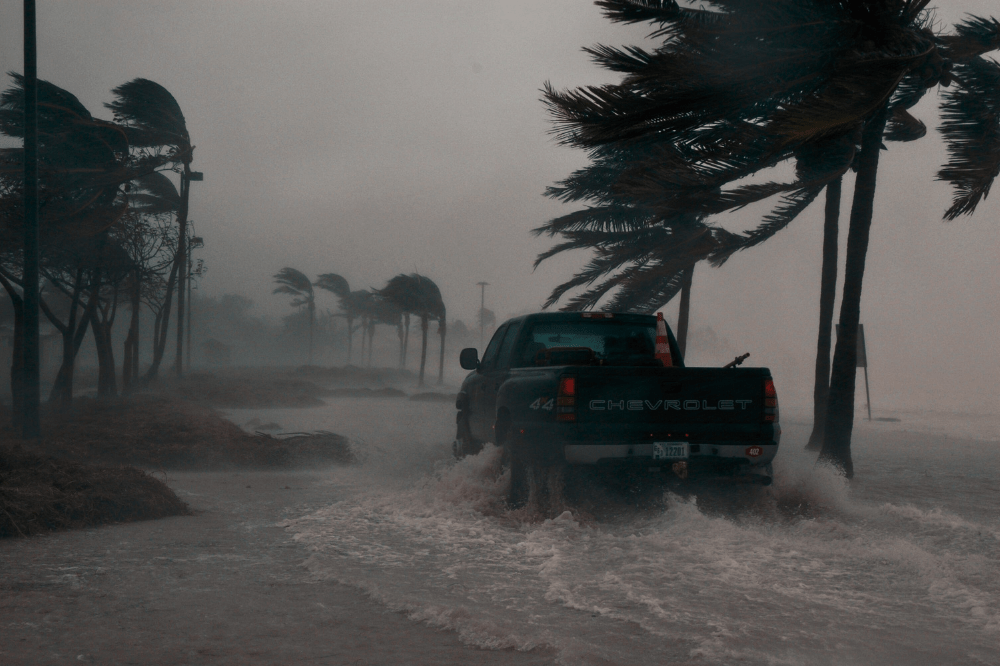A hurricane watch has been ordered? Find out what to do in order to protect your family and your belongings!
As Tropical Storm Helene intensifies and moves closer to Florida, with the potential to strengthen into a hurricane before reaching the shoreline, a hurricane watch has been issued along the state’s western coast. Residents in the affected areas are now preparing for possible hurricane-force winds, flooding, and other hazards.
Learning how to take the right precautions can make a significant difference in keeping you and your family safe, as well as protecting your belongings. So, let’s delve into some of the steps you can take to prepare for a natural disaster.
What Does a Hurricane Watch Mean?
It is issued when there’s a possibility that a region could experience hurricane conditions within 48 hours. This gives residents enough time to prepare for potential impacts. While a watch doesn’t necessarily mean a hurricane will make landfall in the area, it signals that you should start taking precautionary measures to ensure your safety, as hurricanes can bring a variety of dangers, ranging from severe winds to flash flooding. Here are some of the risks:
- High Winds: hurricane-force winds can reach speeds over 74 mph, damaging roofs, windows, and vehicles, and knocking down trees and power lines;
- Storm Surge: a hurricane can lead to a storm surge, which is an abnormal rise in sea level, often leading to severe flooding in coastal areas;
- Heavy Rainfall: it can come with several inches of rain in a short time, causing widespread flooding, especially in low-lying areas;
- Tornadoes: while not always common, hurricanes can spawn tornadoes, adding another layer of danger to an already hazardous situation.
How to Protect Yourself and Your Family During a Hurricane Watch
When a hurricane watch is issued, it’s crucial to begin preparing as early as possible. The National Weather Service (NWS) and other safety organizations recommend the following steps to safeguard yourself and your property during a hurricane:
1. Stay Informed and Monitor the News
Keep up with official news sources, such as the National Weather Service and local authorities. It’s essential to stay informed about the storm’s path and strength. Having a battery-operated radio on hand is a great backup in case of power outages.
2. Prepare an Emergency Kit
Assemble an emergency kit that can sustain your family for at least three days. Essential items include:
- Water (one gallon per person per day);
- Non-perishable food;
- First aid supplies;
- Flashlights with extra batteries;
- Necessary medications;
- Important documents (ID, insurance policies) stored in waterproof containers;
- Others: pet supplies, baby formula, and any specific needs for elderly or disabled family members.
3. Secure Your Home
Strengthen your home against potential damage by following these steps:
- Shutter Windows: use hurricane shutters or board up windows with plywood to protect them from high winds and flying debris;
- Secure Loose Items: move outdoor furniture, grills, and other loose items indoors to prevent them from becoming projectiles;
- Reinforce Doors and Garage Doors: make sure entry doors are securely locked and garage doors are braced, as these can be particularly vulnerable to strong winds;
- Check Your Surroundings: if you can, check the integrity of your roof and trim any branches or trees that could pose a risk to the house during high winds.
4. Prepare to Evacuate
If local authorities recommend evacuation, follow their advice immediately. Waiting too long can make it harder to leave safely. Here’s what to keep in mind:
- Know Your Evacuation Route: have a clear plan of where you’ll go and how you’ll get there. Many states, including Florida, have designated evacuation routes to help residents leave quickly and safely;
- Fuel Your Vehicle: fill up your gas tank ahead of time to avoid long lines at gas stations;
- Plan For Pets: make sure you have a safe place for your pets. Not all shelters accept animals, so check ahead of time for pet-friendly locations.
How to Protect Your Belongings During a Hurricane Watch
- Move Valuables To Higher Ground: flooding is a major risk, so move important items such as electronics, furniture, and family heirlooms to an upper floor or place them on high shelves;
- Photograph Your Possessions: take pictures of your home and valuables before the storm hits. This can help with insurance claims in the event of damage;
- Back Up Important Documents Digitally: store important documents online or on a cloud service to ensure they’re accessible even if physical copies are damaged.
Staying Safe After the Storm
Once the hurricane has passed, dangers may still remain. Power outages, downed power lines, and flooded areas can pose significant threats. Here are some extra safety tips for after the storm:
- Avoid Floodwaters: even shallow water can be dangerous. It might be contaminated with debris or sewage, and there’s always the risk of electric shock from downed power lines;
- Check For Gas Leaks: if you smell gas or hear a hissing sound, leave your home immediately and call your utility company;
- Inspect Your Home For Damage: before entering, check for structural damage, such as cracks or loose foundations.

